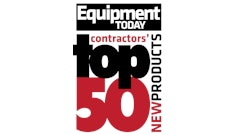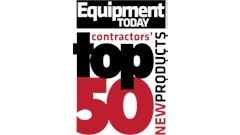
The following case study was written by Kevin Koberg, marketing director at DICA, and communicates the many benefits DICA FiberMax Crane Pads provide over wood and steel alternatives.
Connelly Crane Rental Corp., Detroit, is a 75-year-old regional crane rental company serving Michigan, Indiana, and Ohio. Its fleet includes boom trucks, rough-terrain cranes, AT and truck cranes, and crawler cranes. For years, the company had used timber mats for ground support under their larger cranes, but they started looking for an improved solution.
“It is important that cranes with outriggers be set up on some type of pads,” said Joe Estep, operations manager. “When it comes to crane accessories, outrigger pads are fundamental.”
The Need for a Crane Pad Solution
When the company purchased a 265-t. Liebherr LTM 1220-5.2 all-terrain crane, Estep considered his options for ground support materials that would be longer-lasting, easier to move, and would eliminate the need to spend $3,000 to $4,000 every few years for new mats.
 The Connelly Crane Rental team, with their second largest all-terrain crane, a Grove GMK5165.
The Connelly Crane Rental team, with their second largest all-terrain crane, a Grove GMK5165.
Wood is an organic material that easily breakdowns and needs frequent replacement:
- Wood mats and pads degrade, or rot, over time and the structural strength decreases as they decompose. Because of this, engineers have no way of knowing if the mats or pads are good quality or not.
- Wood outrigger pads must be replaced frequently.
- Both wood and timber cribbing are increasingly being limited by site managers.
- OSHA is paying closer attention to crane pads and foundation setup.
- OSHA has said that cranes must be set-up on firm ground that’s been sufficiently drained and graded, while also using supporting gear like blocking, pads, and crane mats. For more, see OSHA 1926.1402. Using an engineered outrigger pad with known properties, although not required, makes communication with compliance officers much easier.
Steel is strong and rigid, but its primary drawbacks are weight and corrosion:
- Increased weight means increased transportation and labor costs. Loading out a single truck with a set of four steel pads is typically not cost-effective.
- Internal welds on steel crane pads are susceptible to corrosion and fatigue, and are not easily inspectable. In addition, over-stressed steel can yield and suffer permanent deformation.
The Decision Process
Estep says contractors are becoming increasingly aware of the importance of proper crane setup. “They may not fully understand the dynamics behind it and often request solid matting when blocking or cribbing would suffice. However, there seems to be a trend that customers prefer to see solid mats under the outriggers,” he said.
Estep performed a cost-benefit analysis between FiberMax Crane Pads and timber mats. Because wood breaks down quickly, Estep typically replaces the timber mats every two to three years at a cost of $3,000 to $4,000 each set. In the last 15 years, he has replaced the timber mats used with the company’s larger 360-t. Liebherr at least seven times.
“That’s $25,000 to $30,000 just on wood mats, not considering the labor to configure them,” he said. “Over a 15- to 16-year span, I figured I would spend the same amount on replacing timber mats as I would on investing in the FiberMax crane pads. Plus, I will save on labor and transportation costs since the FM8x5x10 Mega Duty crane pads weigh less than 1,300 lbs., about 60% less than what we had been using previously.”
The Solution
 The new crane outfitted with the FiberMax pads has completed several jobs within the first month of delivery. One of those was lifting a 150,000-lb. piece of machinery out of a steel factory in Dearborn, Michigan.
The new crane outfitted with the FiberMax pads has completed several jobs within the first month of delivery. One of those was lifting a 150,000-lb. piece of machinery out of a steel factory in Dearborn, Michigan.
Benefits of FiberMax over Wood and Steel Crane Pads:
- Engineered – Made of engineered materials, FiberMax Crane Pads will not rot, delaminate, or degrade with use or exposure to the environment.
- Life Span – FiberMax Pads have a 20+ year lifespan.
- Strength – FiberMax Pads are as strong as steel. The bi-directional shear web design was originally developed for vehicle and pedestrian bridges. This innovative design allows FiberMax Pads to distribute concentrated loads over large areas and effectively reduce ground bearing pressures.
- Transport – FiberMax Crane Pads weigh up to 60% less than steel pads, resulting in significant transportation savings. Users of FiberMax Pads consistently report being able to eliminate a truck, trailer, and employee per job. On jobs 50 mi. or less, that’s typically a $500 savings each way. For jobs that extend thousands of miles away, users have reported saving $5,000 each way.
- Labor – A set of four FiberMax Crane Pads can be picked and placed quickly, reducing setup and tear-down time. Several hardware options are available to suit individual needs.
- Professional – Standard features include a center target, hi-visibility non-slip surfaces, high-contrast steel frames, safety striping, and serial numbers, which present a professional message to site managers and customers.
The Results
The new crane outfitted with the FiberMax Crane Pads has completed several jobs within the first month of delivery. One of those was lifting a 150,000-lb. piece of machinery out of a steel factory in Dearborn, Michigan.
“The operator and crew couldn’t be happier,” said Estep. The FiberMax crane pads are easier to handle—they weigh half as much as wood and steel plate, which makes them easier to set-up. The crew also said they have confidence in their setup and like that the crane pads look professional.
Based on the performance and cost savings of the FiberMax product, “This was the first set of FiberMax crane pads we’ve purchased, but they won’t be the last,” said Estep.




















